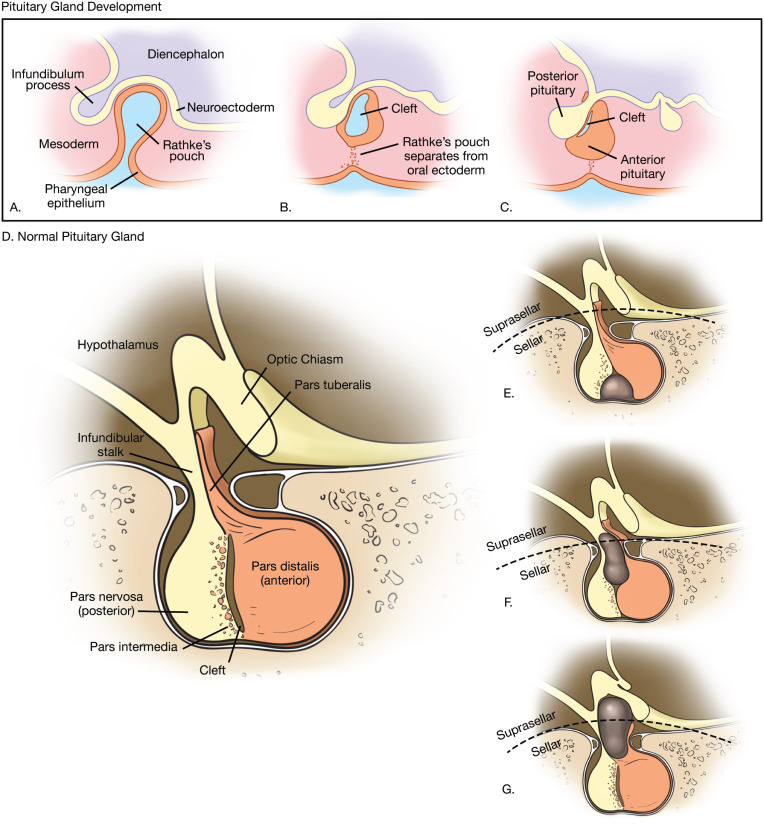Physical Address
304 North Cardinal St.
Dorchester Center, MA 02124
Rathke cleft cysts are cystic sellar and suprasellar lesions arising from remnants of the embryonic Rathke pouch, a structure of ectodermal origin that folds superiorly from the pharynx during the fourth week of gestation. In the sella, Rathke pouch gives rise to the adenohypophysis anteriorly and intermediate lobe of the pituitary gland posteriorly. In the suprasellar cistern, Rathke pouch gives rise to the pars tuberalis. Failure of embryonic regression results in a persistent remnant of the embryologic Rathke cleft, which, over time, fills with fluid, resulting in the formation of a Rathke cleft cyst. Rathke cleft cysts are typically intrasellar, intrasellar and suprasellar, or suprasellar depending on where exactly the failure in embryonic regression is located ( Fig. 20.1 ).

Most Rathke cleft cysts are incidental findings, found in 4% to 33% of autopsy cases and increasingly found on routine magnetic resonance imaging (MRI). When such a cyst is symptomatic, patients typically present with pituitary dysfunction, visual disturbance, or headache. Asymptomatic Rathke cleft cysts can safely be followed with serial imaging, whereas surgical resection is typically offered for those patients who are symptomatic.
Become a Clinical Tree membership for Full access and enjoy Unlimited articles
If you are a member. Log in here